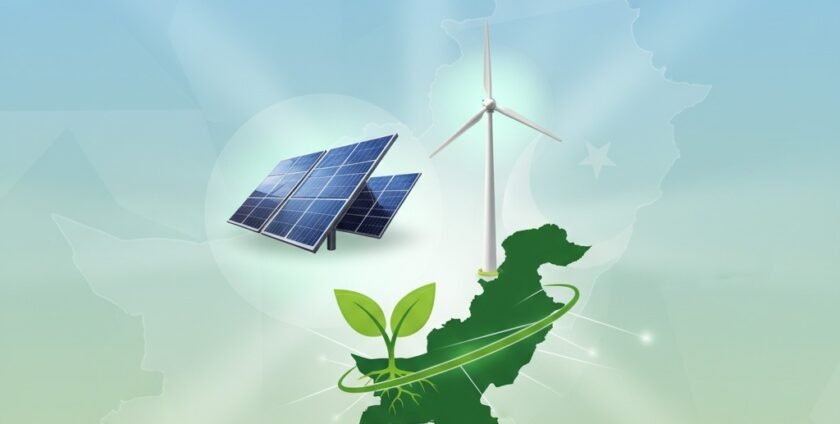
The Future of Renewable Energy in Pakistan—Opportunities and Challenges
Discover the future of renewable energy in Pakistan—from solar and wind to hydropower opportunities. Learn about government initiatives, private sector roles, and the key challenges shaping Pakistan’s transition toward a sustainable and energy-independent future.
Introduction
Pakistan stands at a critical energy crossroads. With rising fuel costs, climate change concerns, and an increasing energy demand, renewable energy has become not just an alternative but a necessity. The future of renewable energy in Pakistan looks promising as the country gradually shifts from conventional fossil fuels to sustainable energy sources like solar, wind, and hydropower.
Current Energy Landscape in Pakistan
Pakistan’s energy mix still heavily depends on imported oil and natural gas, which contributes to high electricity costs and trade deficits. According to recent data, over 60% of Pakistan’s electricity is generated through non-renewable sources. However, government initiatives like the Alternative and Renewable Energy (ARE) Policy 2019 aim to produce 30% of power from renewable sources by 2030—a major step toward energy independence.
Opportunities in Renewable Energy
1. Solar Power
Pakistan receives over 300 sunny days annually, making it an ideal location for solar energy. Cities like Lahore, Karachi, and Multan are becoming key hubs for solar panel installations.
-
Residential solar systems help cut down electricity bills.
-
Industrial solar solutions can reduce dependency on grid electricity.
-
Government incentives like net metering make solar energy more affordable.
2. Wind Energy
The Sindh and Balochistan coastal regions have immense wind potential. The Jhimpir and Gharo corridors can produce thousands of megawatts of clean power. International investors are showing strong interest in developing wind farms in these areas.
3. Hydropower and Biomass
Pakistan’s northern areas are rich in rivers, making hydropower a stable renewable source. Similarly, biomass energy—produced from agricultural and industrial waste—can help rural communities gain energy access while reducing environmental waste.
Government Policies and Private Sector Role
The government has launched several initiatives, such as
-
Alternative Energy Development Board (AEDB) projects.
-
Net metering regulations allow individuals to sell extra solar energy to the national grid.
-
Incentives for private investors and reduced import duties on renewable equipment.
Private companies like IMH Technologies are also playing a major role by providing high-quality solar systems and promoting sustainable solutions for homes and industries.
Challenges Facing Renewable Energy in Pakistan
Despite the potential, there are still challenges to overcome:
-
High Initial Costs: Although solar and wind systems are cost-effective long-term, their initial investment remains high for average consumers.
-
Lack of Awareness: Many people still rely on conventional electricity due to limited understanding of renewable benefits.
-
Grid Infrastructure Issues: Pakistan’s outdated grid system struggles to support large-scale renewable integration.
-
Policy Implementation Gaps: Although policies exist, inconsistent enforcement slows renewable energy growth.
Future Outlook
The future of renewable energy in Pakistan is bright and full of potential. With consistent government policies, private sector involvement, and technological innovation, Pakistan can achieve its renewable energy targets. By 2030, the country could transform its energy mix, reduce dependency on imports, and ensure energy security and sustainability for future generations.
Conclusion
Renewable energy is not just an environmental choice for Pakistan—it’s an economic and strategic necessity. By investing in solar, wind, and hydropower, Pakistan can tackle its energy crisis, lower costs, and contribute to a cleaner planet. The time to act is now, and every business, household, and policymaker has a vital role to play.
FAQs – Renewable Energy in Pakistan
1. What is the future of renewable energy in Pakistan?
The future of renewable energy in Pakistan looks promising. With rising energy demand and decreasing fossil fuel reserves, Pakistan is focusing on solar, wind, and hydropower projects to achieve energy independence and sustainability.
2. Which renewable energy source has the most potential in Pakistan?
Solar energy has the greatest potential due to Pakistan’s high sunlight exposure throughout the year. Wind energy in Sindh and Balochistan also shows strong growth potential.
3. What are the main challenges in renewable energy development in Pakistan?
Key challenges include lack of financing, outdated grid infrastructure, inconsistent policies, and limited public awareness about renewable energy benefits.
4. How is the government supporting renewable energy in Pakistan?
The Government of Pakistan is promoting renewable energy through incentives, net metering policies, and projects under the Alternative Energy Development Board (AEDB).
5. Can businesses benefit from investing in renewable energy?
Yes, businesses can reduce electricity costs, improve brand image, and achieve long-term savings by investing in renewable energy systems such as solar panels or hybrid energy solutions.
6. What role does solar energy play in Pakistan’s renewable energy future?
Solar energy plays a central role, especially for residential, agricultural, and industrial sectors. The government aims to increase solar capacity significantly by 2030.
7. How can individuals contribute to Pakistan’s renewable energy future?
Individuals can adopt solar systems for homes, support eco-friendly products, and spread awareness about the importance of clean energy.
- By: IMH Technologies
- 0 comment

Leave a Reply